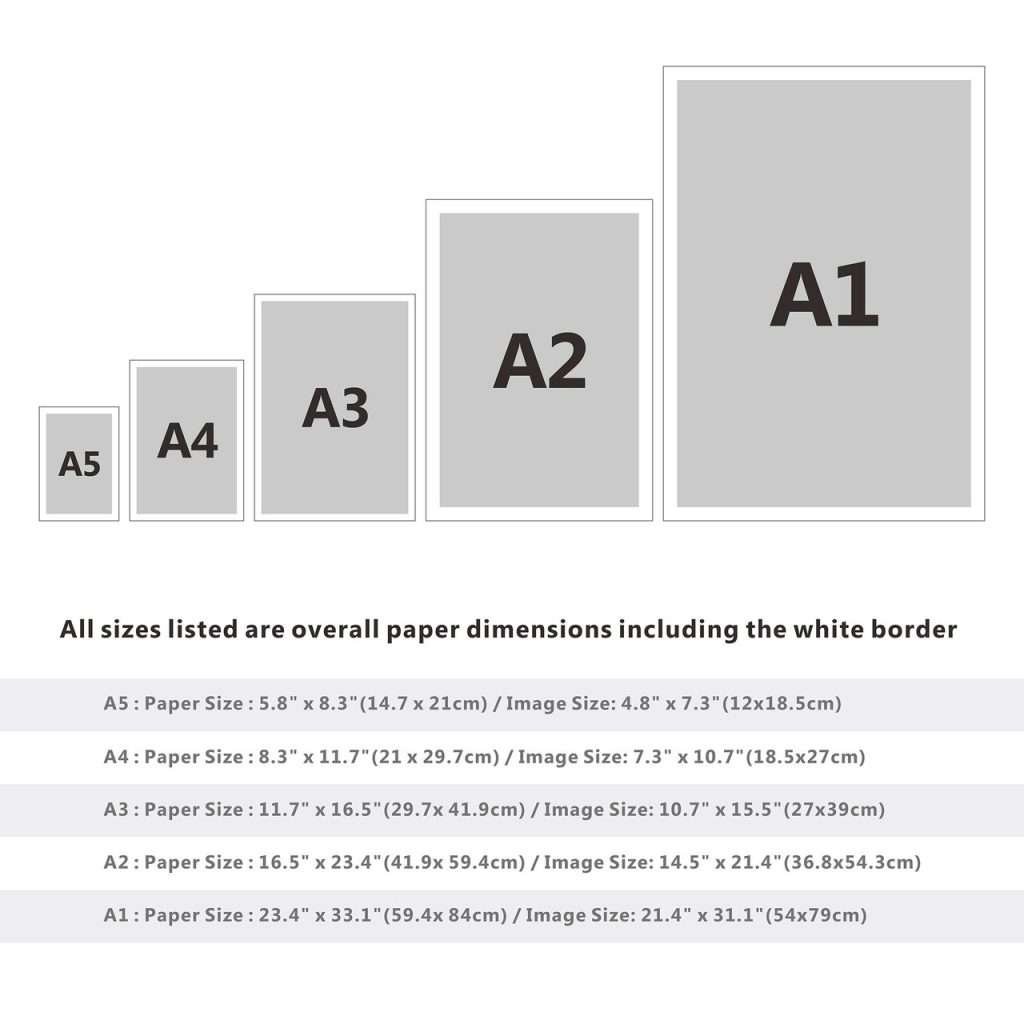In the realm of paper sizes, the A-series has become a global standard, widely adopted for various printing and design purposes. Developed by the International Organization for Standardization (ISO), the A-series papers boast a consistent aspect ratio and are known for their versatility. In this blog, we’ll delve into the details of the A-size papers, exploring their dimensions, common uses, and the rationale behind their standardized proportions.
A-Size Paper Dimensions:
The A-series paper sizes defined by ISO 216, and they based on the A0 size, which has an area of 1 square meter. The subsequent sizes in the series determined by halving the paper in its longest dimension, maintaining the same aspect ratio. Here’s a quick overview of the common A-size papers:
- A0: 841 x 1189 mm (33.1 x 46.8 inches)
- A1: 594 x 841 mm (23.4 x 33.1 inches)
- A2: 420 x 594 mm (16.5 x 23.4 inches)
- A3: 297 x 420 mm (11.7 x 16.5 inches)
- A4: 210 x 297 mm (8.3 x 11.7 inches)
- A5: 148 x 210 mm (5.8 x 8.3 inches)
- A6: 105 x 148 mm (4.1 x 5.8 inches)
- A7: 74 x 105 mm (2.9 x 4.1 inches)
- A8: 52 x 74 mm (2.0 x 2.9 inches)
- A9: 37 x 52 mm (1.5 x 2.0 inches)
- A10: 26 x 37 mm (1.0 x 1.5 inches)
Common Uses of A-Size Papers:
The A-series papers find application in various fields due to their standardized dimensions. Here are some common uses for different A-size papers:
- A0 and A1: These larger sizes are often used in architectural and engineering drawings, posters, and presentations.
- A2 and A3: Frequently employed for artwork, diagrams, and larger graphic prints.
- A4 is the most widely used size for everyday documents, including letters, resumes, and reports. It’s also the standard size for business correspondence.
- A5: Often use for booklets, brochures, and notepads.
- A6 and A7: Popular for creating postcards, invitations, and smaller promotional materials.
- A8, A9, and A10: These smaller sizes are commonly used for specialized applications like business cards and tiny labels.
Advantages of A-Size Papers:
- Consistency: The standardized aspect ratio ensures easy scaling and compatibility across different sizes within the A-series.
- Ease of Handling: The progressive halving of the paper sizes makes it convenient to resize documents without compromising their proportions.
- Global Acceptance: A-size papers have gained worldwide acceptance, simplifying communication and collaboration across borders.
Conclusion
The A-series paper sizes have become an integral part of our daily lives, offering a standard and versatile solution for various printing and design needs. Whether you’re drafting architectural plans, printing promotional materials, or simply writing a letter, understanding the A-size paper dimensions can help you choose the most suitable format for your requirements. The consistent aspect ratio and global acceptance make A-size papers an essential tool in the world of design and communication.


